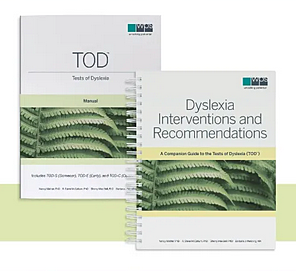PDD Behavior Inventory (PDDBI) & PDD Behavior Inventory Screening Version (PDDBI-SV)
Author(s) : Ira L. Cohen and Vicki Sudhalter
Publisher : PAR, 1999
SKU : PG_PDDBI
Purpose: Assess responsiveness to intervention in children with Autism Spectrum Disorder (ASD)
Age: PDDBI: 2-12 years; PDDBI-SV: 1-12 years
Time: PDDI Extended Forms: 30-45 minutes; PDDI Standard Forms: 20-30 minutes; PDDBI-SV: 5-10 minutes
Administration: Informant Report; Individual or group
Format: Online
The PDD Behavior Inventory (PDDBI) is an informant-based rating scale that is designed to assist in in the assessment of children who have been diagnosed with a pervasive developmental disorder (PDD) / Autism Spectrum Disorder (ASD).
PDD is characterised by severe and pervasive impairments in several areas of development (e.g., communication skills, reciprocal social interaction skills, presence of stereotypical behaviours/activities).
Key Features
- Unlike existing assessments for ASD, the PDDBI was developed to assess both problem behaviours as well as appropriate social, language, and learning/memory skills. It was also designed to provide age-standardised scores for both parent and teacher ratings.
- Each PDDBI Form includes an extended set of items (Parent = PDDBI-PX, with 188 items; Teacher = PDDBI-TX, with 180 items) and a standard set of items (Parent = PDDBI-P and Teacher = PDDBI-T, each with 124 items), allowing you to decide on a case-by-case basis how you wish to administer the items.
- The extended form is appropriate for use when you wish to assess other aspects of the child's behaviours beyond those that are specifically associated with autism. These other behaviours (e.g., fear, aggression) may be important if you are concerned with placement issues and treatment recommendations.
- The standard form is appropriate if the primary concerns are specifically related to autism (e.g., whether treatment is specifically affecting targeted behaviours).
The PDDBI Extended Rating Forms consist of 10 domains for both the parent and the teacher versions; the standard forms each consist of six domains. Each domain consists of a variable number of behavioural clusters that best represent that domain. The clusters help to identify the behaviours that contribute most to a child's score on a given domain. Domain scores are divided into two sections: Approach/Withdrawal Problems and Receptive-Expressive Social Communications Abilities.
Derived from the full scale assessment, the PDD Behavior Inventory Screening Version (PDDBI-SV) helps you quickly identify children between 1-12 years of age at risk for autism spectrum disorder (ASD).
One simple score, Social Deficit (SOCDEF), measures both the presence of inappropriate social behaviors and the absence of appropriate social behaviors and is classified into one of six levels of severity, ranging from extreme symptoms to ASD/social deficits unlikely, letting you know quickly whether the child is at risk.
The following qualifications are required to access this product. Please
login or register to proceed
Please contact ACER Customer Service on +61 3 9007 2048 if you have any queries.
Restricted (R)
- A four-year psychology qualification PLUS postgraduate training in psychological tests
Examples of areas of speciality: Psychiatry, Paediatrics

















